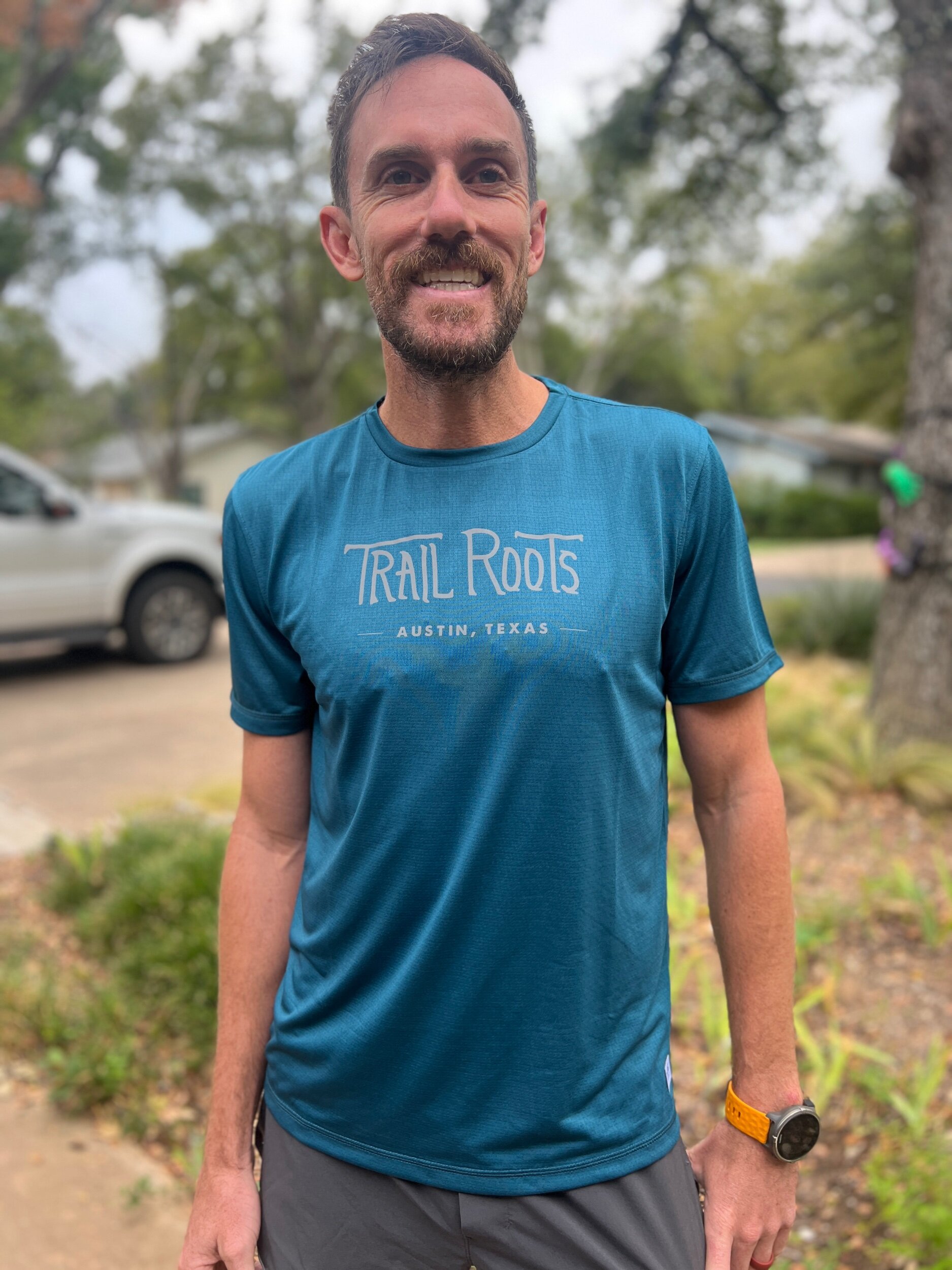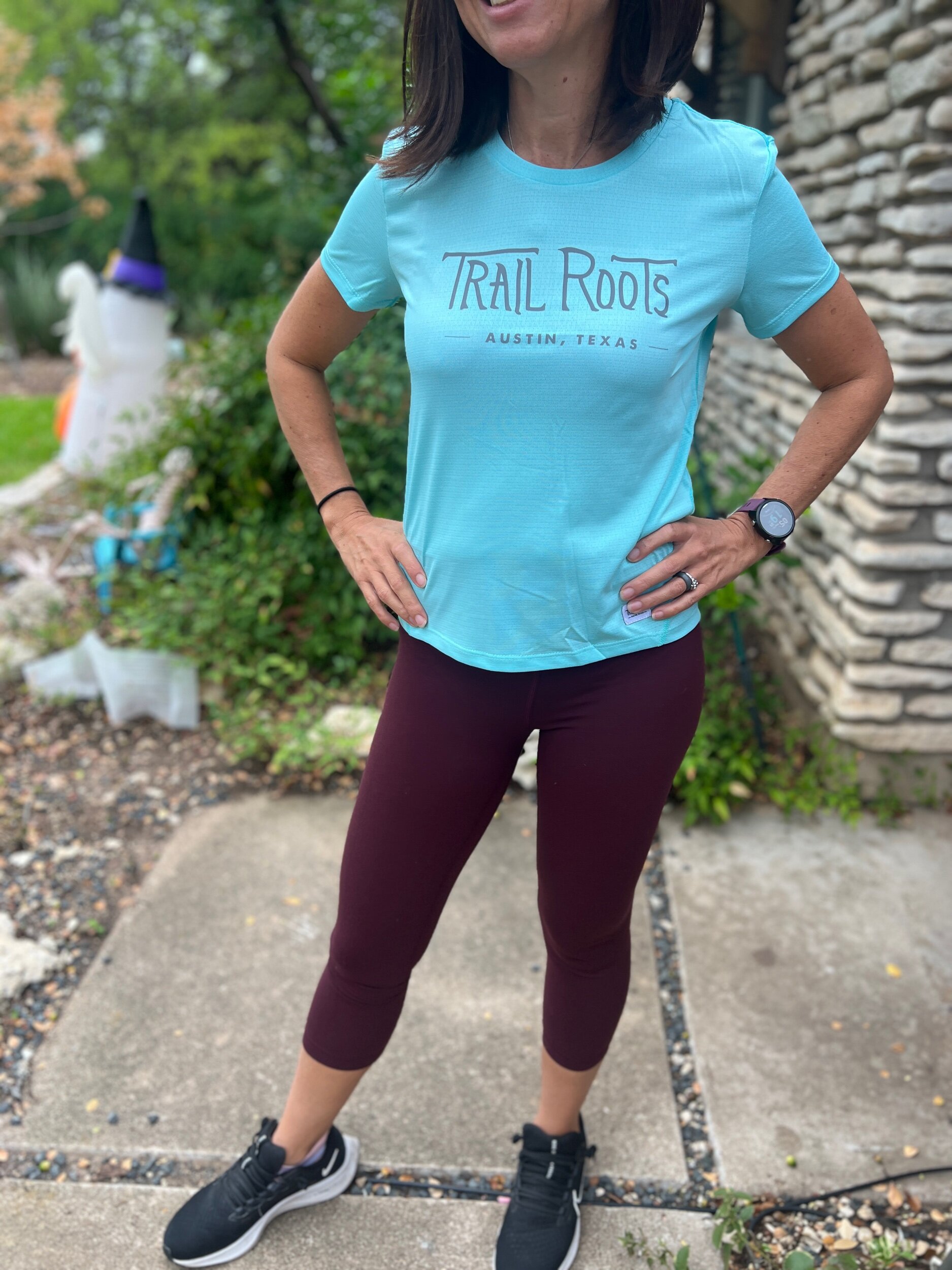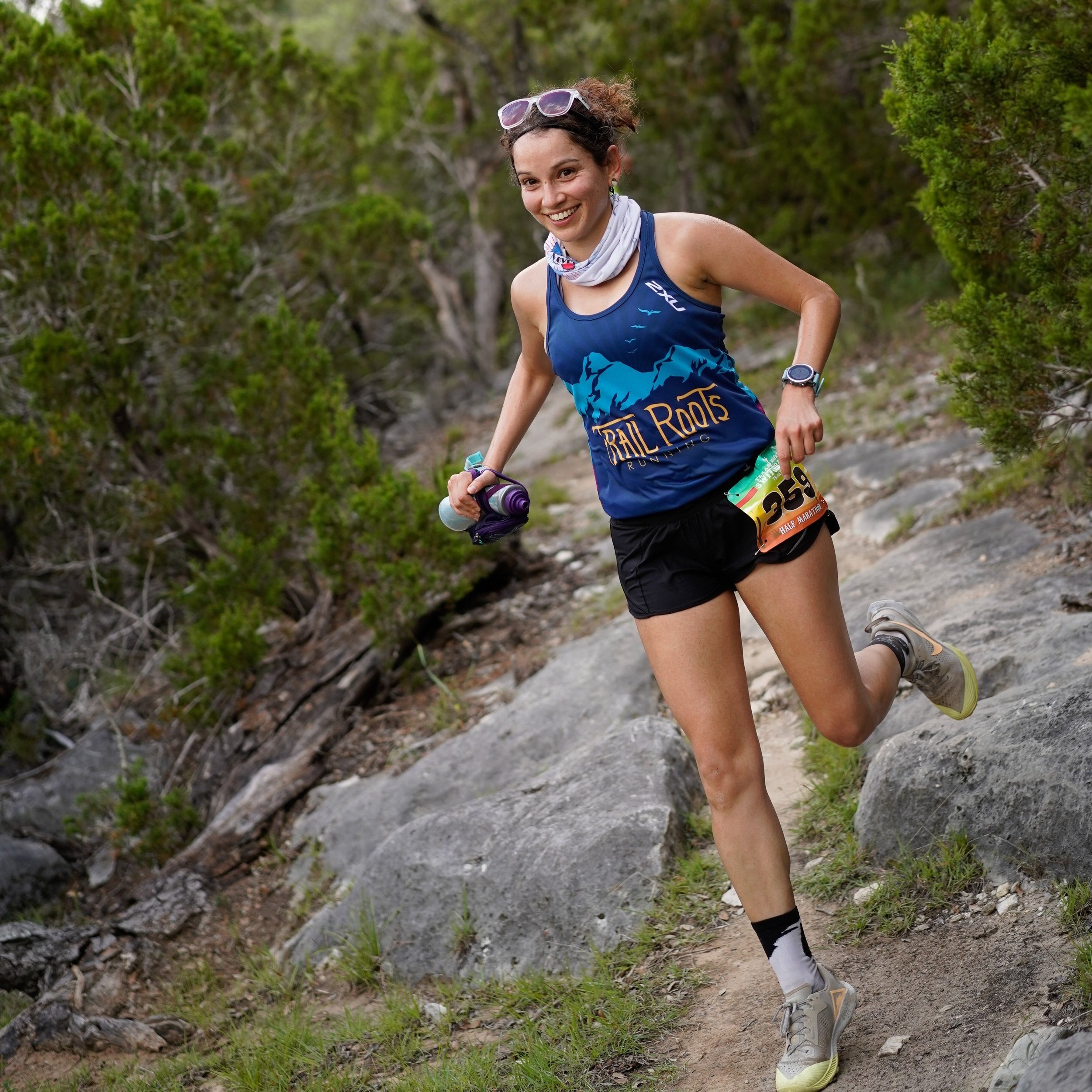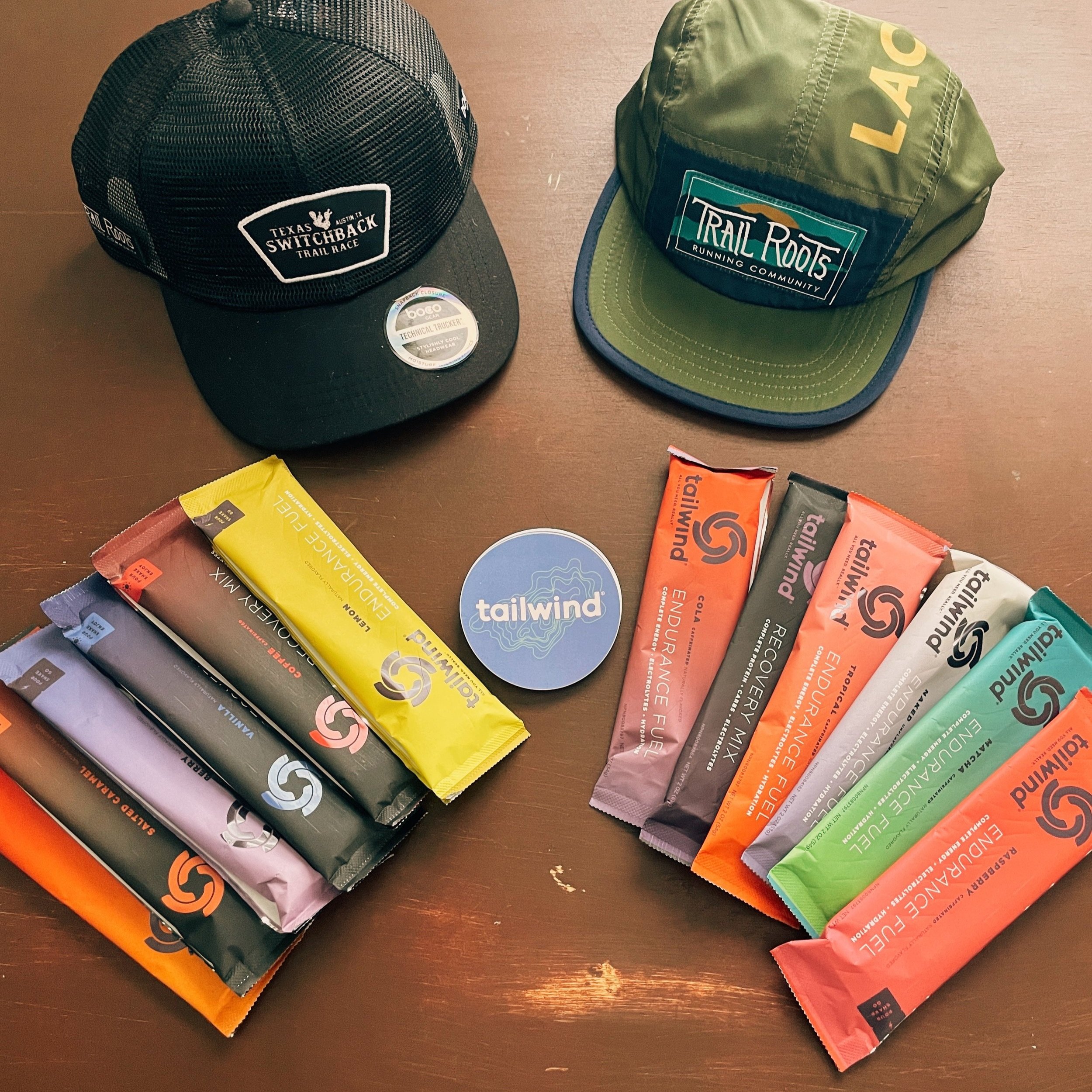Gear for Every Trail Runner
Trail Shoes
Trail shoes are not always necessary, however they are more durable on the trail compared to your road shoes. They also have better traction on the rocks and many have a tougher rubber or rock plate that will give you more protection from the rocks beneath your feet. Trail shoes these days are not as stiff and rigid as they used to be. Typically they will feel pretty similar to your road shoe with a few small, but noticeable differences. With trail shoes, because your stride varies compared to on the road, neutral shoes are going to be the most common and should work for the majority of you. Stop by one of our partner stores who offer Trail Roots Members a discount to get fitted (Ready to Run, The Loop Running Supply).
Do's
Try the shoe on before you buy at a local running store
Go with the shoe that feels the best and most natural
Make sure you have about a thumbs width in front of your big toe
Dont's
We don't recommend waterproof shoes for our climate (waterproof = hot feet)
Don't pick a shoe based solely on looks
Hiking shoes/boots are typically more rigid than you want for a trail run
Hydration Options
Running in central Texas summers can drain your water pretty quick! Be prepared.
Hand held water bottles are great to get you hydrated on shorter routes. 10 oz is fine if you are on the faster end, but we recommend 20 oz at least for new trail runners. The bottles strap around your hand and have a little pocket to hold a gel or bar as well. Some larger bottles even hold your phone! Dual hand held bottles are a great buffer for shielding your wrists on a fall as well. $15-$30
Water bottle waist belts are great if you want your hands free. They are a little more expensive but you can carry more water and gear. There are single bottle belt options as well as smaller 2-4 bottled belts that each hold 6-8 oz of water. These are good too if you like to have an electrolyte in one bottle and water in the other. $40-$60
Hydration packs or vests are a great option for those who plan on being out on the trail for extended periods of time. They carry 1-4 liters of water. Most of the time 2 liters is plenty unless you are running an ultra marathon. These packs also have more space to carry extra clothing or nutrition. They can be more expensive running $70-$180
Trail Clothes
The difference between running clothes and regular clothes is significant. Stop by a running store and try some on. The shorts are much lighter and breathable and some can be more supportive too. Tech shirts including merino wool are great because they keep your body drier and cooler during the run. Make sure you get one that is light and comfortable. Avoid cotton. Some also offer added UV protection.
Running socks are key! Make sure they don't have any cotton. Socks that are merino wool are great because they don't hold moisture and help keep your feet dry and free of blisters. Drymax socks are popular among many trail runners as well. Most running specialty stores will let you try on the socks before you buy as well!
Running hats have a sweat band built in and can be great for dousing in water and cooling your heat. They also give you protection from the sun and keep the sweat out of your eyes! Running buffs/bandanas can also be great as well. They can shade your neck and if kept wet can help cool you. They can also keep you warm in winter.
Running Watch/Phone
Take a watch or phone so you can track your time or distance out on your run. You may want to invest in a GPS watch as well, which now have options under $100. The nicer high end options will cost you $300-$600
Anti Chafe
This is common in the hottest season when you are sweating gallons of water and your clothes are soaked, but also we see chaffing occur in cooler months. When you experience significant chafing in the middle of a run, you won’t forget it. Make sure to save those clothes for a short run next time, so you’re not stuck in the middle of a long with the wrong gear. Here is what you need:
Sport Shield, Body Glide, Trail Toes are all some options that you can apply to areas prone to chaffing before you begin your run. You may need to reapply every 2 hours or so, but this should help keep the worst of it at bay. For severe nipple chaffing you can get athletic tape or Nip Strips. These are designed specifically to keep your nipples free from pain during your run. They are also reusable, but I have yet to do so.
Nutrition
Grab a few light bars or energy gels/chews for your first long run. You want to make sure for runs over 2 hours that you are supplementing your caloric intake. You don’t need to stop and eat, but have something that you like and is easily digestible. Some people use simple things like sour patch candies, and there are also options like Tailwind or Maurten that offer powder options to drink (pre mixed in water) as well.
While there are ton's of things you may want to get, these are a few things that you will want. You may not buy all this at once, but you can ask around in your community what has been working for other runners, and try them out yourself. We hope this makes for an awesome transition into trail running!









